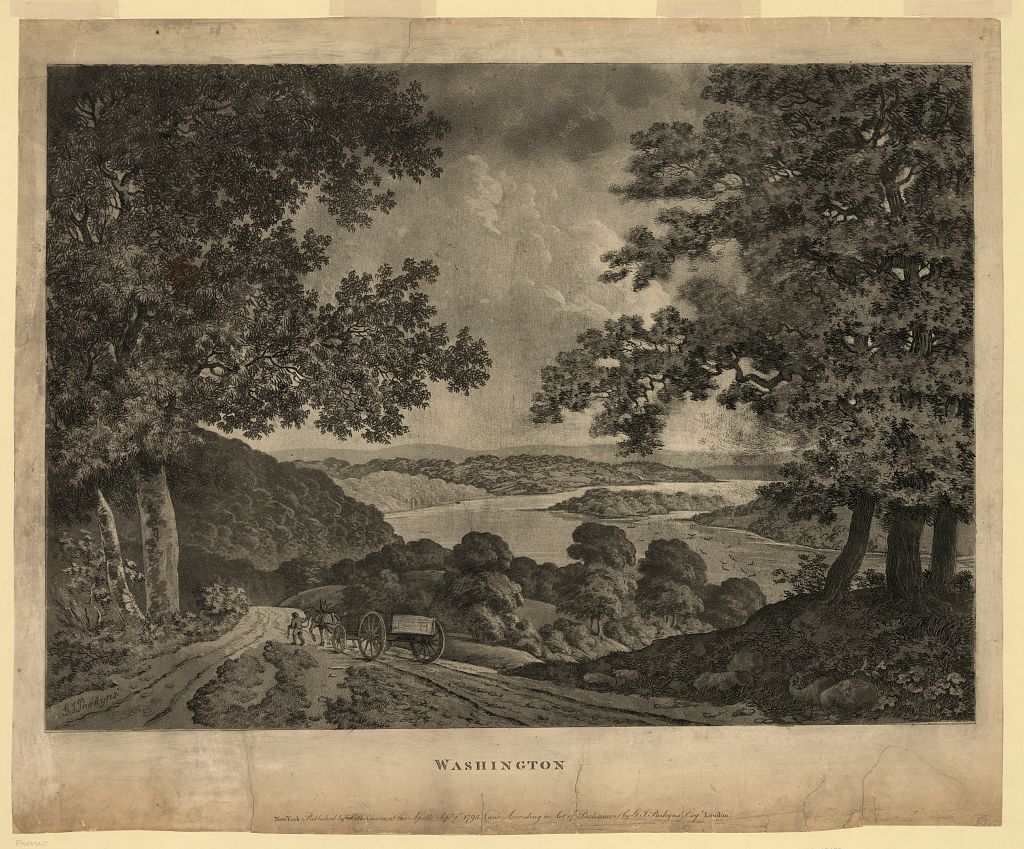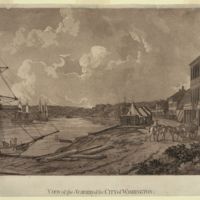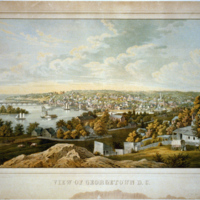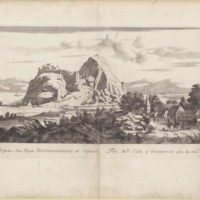Arbor Terrace
The Rock of Dumbarton

'Washington,' an aquatint by George Isham Parkyns, showing a cart in the road overlooking the Potomac River, cir. 1795
Dumbarton Oaks' history officially began in 1703, when the Scotsman Colonel Ninian Beall was granted title to 795 acres of land overlooking the Potomac River. Beall dubbed the site "The Rock of Dunbarton" after a famous stone outcropping and Castle in Glasgow. The patent was granted by Charles Calvert, the third Lord Baltimore in the tems:
We doe therefore hereby grant unto him the said Ninian Beale, all that tract or parcel of land called Rock of Dunbarton – lying in the said County. Beginning at the South East Corner Tree, of a Tract of Land taken from Robert point running thence with the said land North West six hundred and forty parches thence East three hundred and twenty parches, then South six degrees and a half, Easterly four hundred and eighteen parches, then West twenty parches, then South South West one hundred and seventy five parches, then with a straight line by the Creek and River to the first bound. Containing and then laid out for seven hundred ninety and five acres more or less.”
Prior to Beall’s ownership, the land had been part of Manor of Calverton, which, according to Walter Muir Whitehill’s book Dumbarton Oaks: a history of a Georgetown house and garden “extended from Chaptico Creek on the Wicomico west along the Potomac for an unknown distance”. The Calverts set aside 1,000 acres for themselves while they distributed 50 acre agricultural plots to Indians; however, the plots were eventually granted to white settlers.
In 1717 Beall's son George inherited 480 acres of the property, but later added an additional 1,380 acres. Along with George Gordon, Beall sold 60 acres to a group of Maryland settlers in 1751 to establish a town and tobacco inspection station along the Potomac called "George Town". Upon George Beall’s death in 1780, his property was divided into two portions along the stream north of Dumbarton Oaks. Thomas Beall, his younger son, inherited the southern portion of his father's land that included what would later become Dumbarton Oaks and lived in the home that is today located at 3017 N Street. Thomas also sold two portions of Dumbarton Oaks to Georgetown, both north of the existing town and east of Wisconsin Avenue (then High Street). The first parcel went as far north as today’s Q street, while the second extended to R Street. Beall also sold lots to individuals, as well as land on the crest of the heights above Georgetown. Through these and prior transactions, Ninian Beall’s original 795 acres was reduced to 80 acres.



